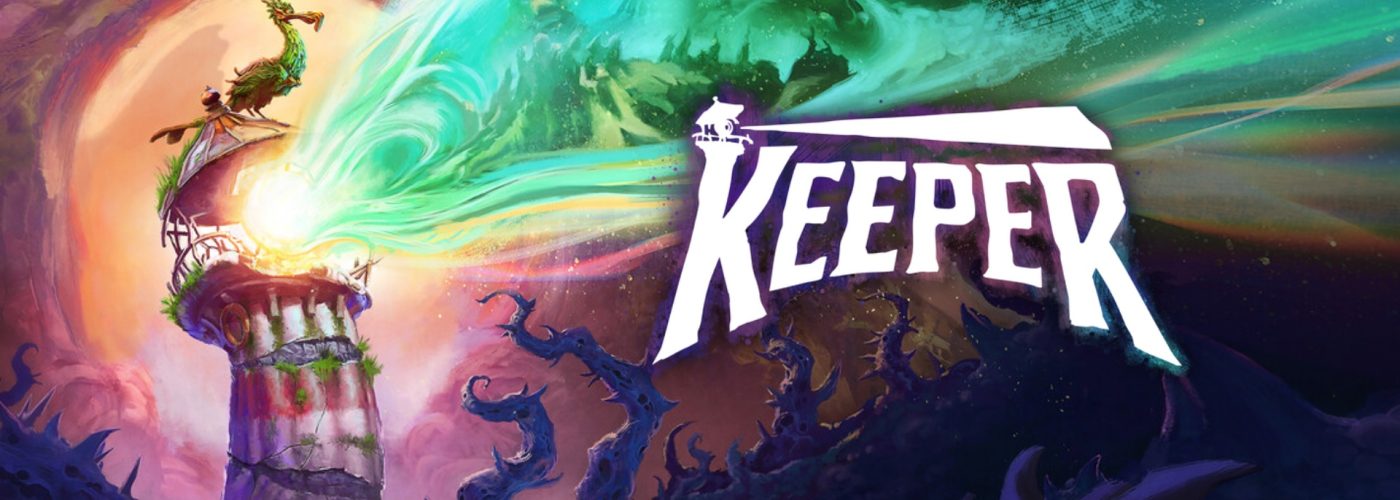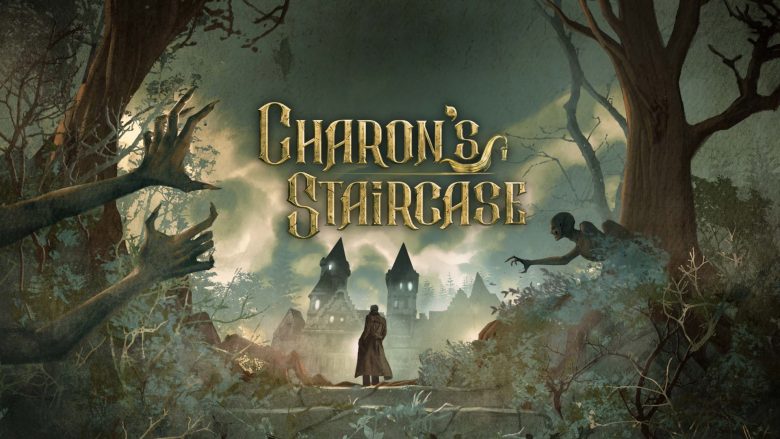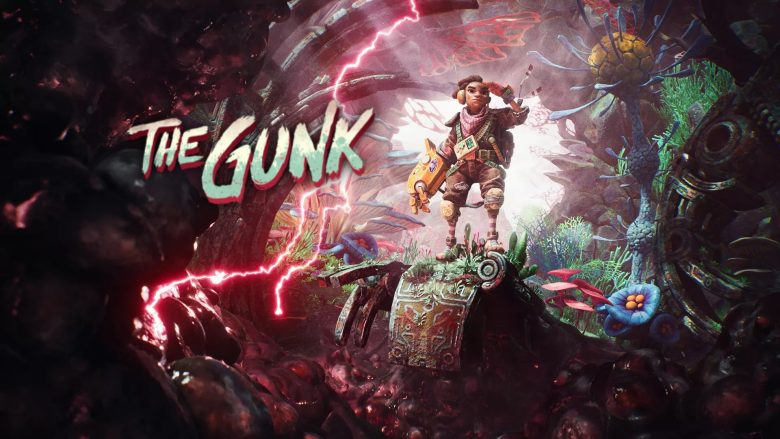A quietly poetic journey through friendship, solitude, melancholy and visual wonder.
Keeper was born during Double Fine’s Amnesia Fortnight – the studio’s now-legendary two-week internal game jam where teams step away from their main projects to prototype whatever speaks to them. The result here is one of the event’s most conceptually striking experiments: a compact, deeply evocative experience that blends environmental storytelling, light resource management, contemplative exploration and a persistent, slow-burn melancholy.
In the game, players step into the role of a lighthouse, perched on a remote island, where the quiet rhythm of daily life slowly merges with subtle mysteries, small environmental puzzles, and a growing sense of isolation. Keeper is not about action or complex mechanics; its strength lies in capturing a precise emotional state: conscious solitude, the steadfast upkeep of a task unseen yet essential, and the fragile psychological balance of a life lived at the edge of the world.
From its opening minutes, the tone asserts itself: measured pacing, a delicate near-suspended score, and the lighthouse’s beam marking time like a heartbeat. The game isn’t narrated so much as felt: in the wind, in creaking boards, in the thrum of machinery and the distant sea. Interaction is minimal but meaningful. Tending the lamp, reading faint environmental signals and repeating small rituals create an emotional loop designed less to entertain in conventional terms and more to prompt reflection on duty, time and presence.
Keeper reads more as a playable portrait of solitude, devotion and mystery than as a typical game. The lighthouse itself becomes a character – aged gears, salt-worn walls – and the island a microcosm suspended between sea and cloud, with the player as its sole moving element. The aim is not spectacle; it is to represent the lighthouse as the last point of light in the dark – a metaphorical beacon rather than a mere functional object.
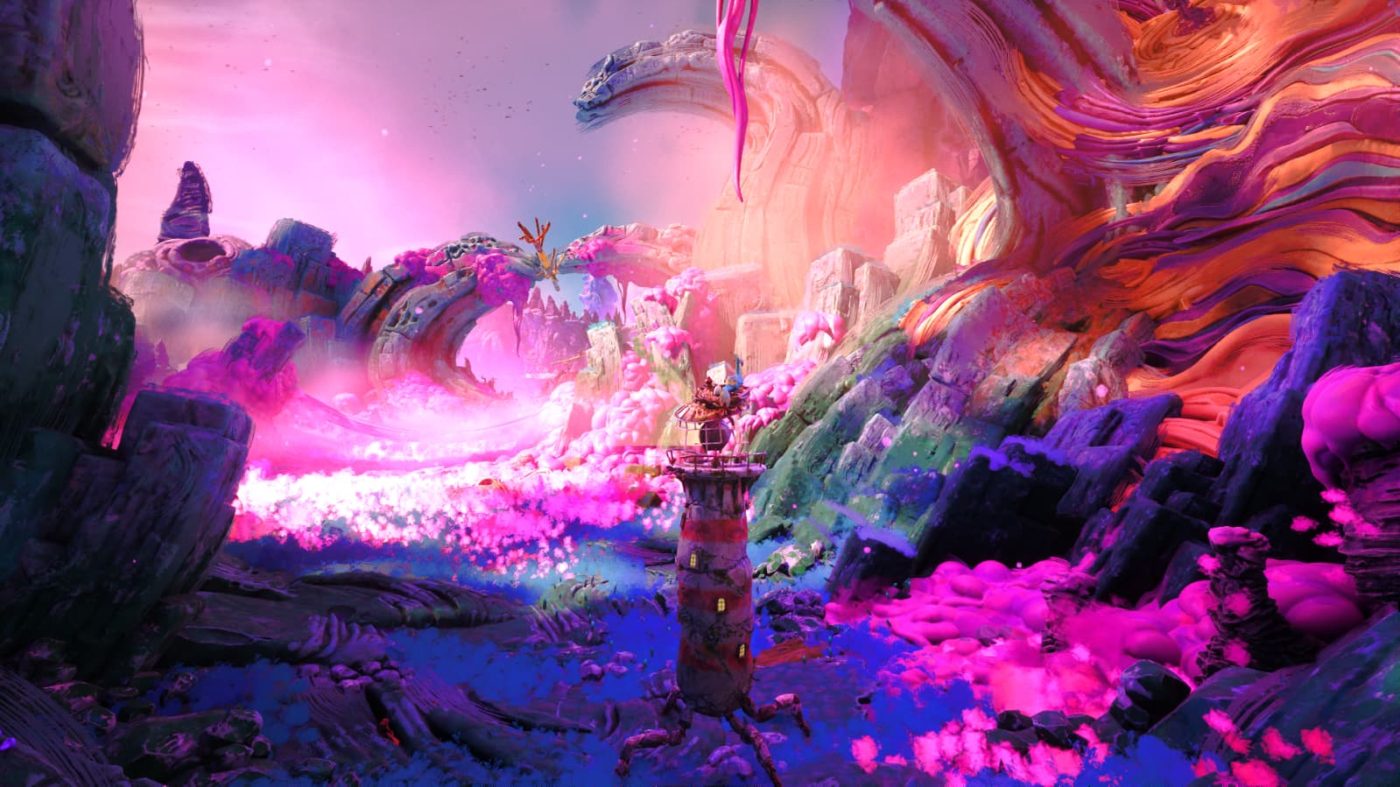
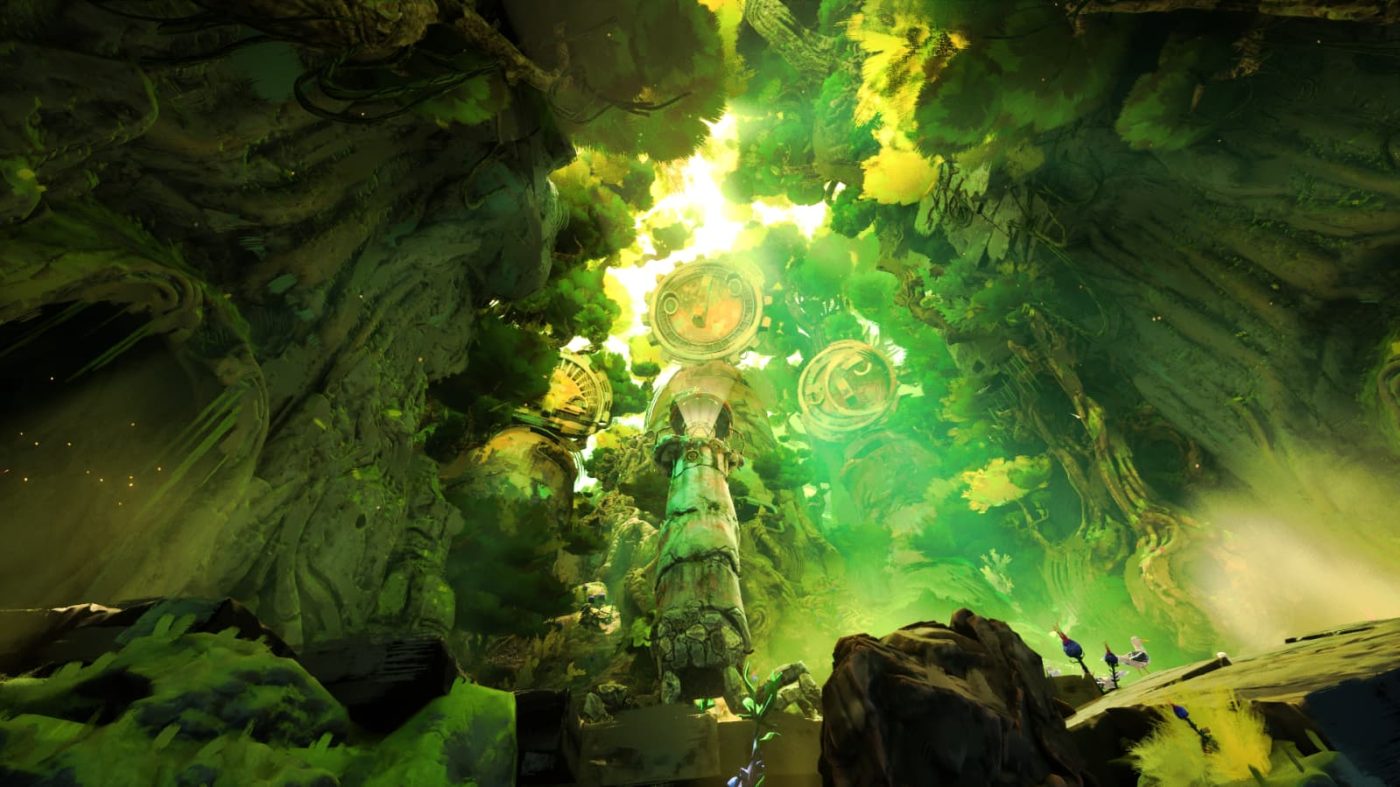
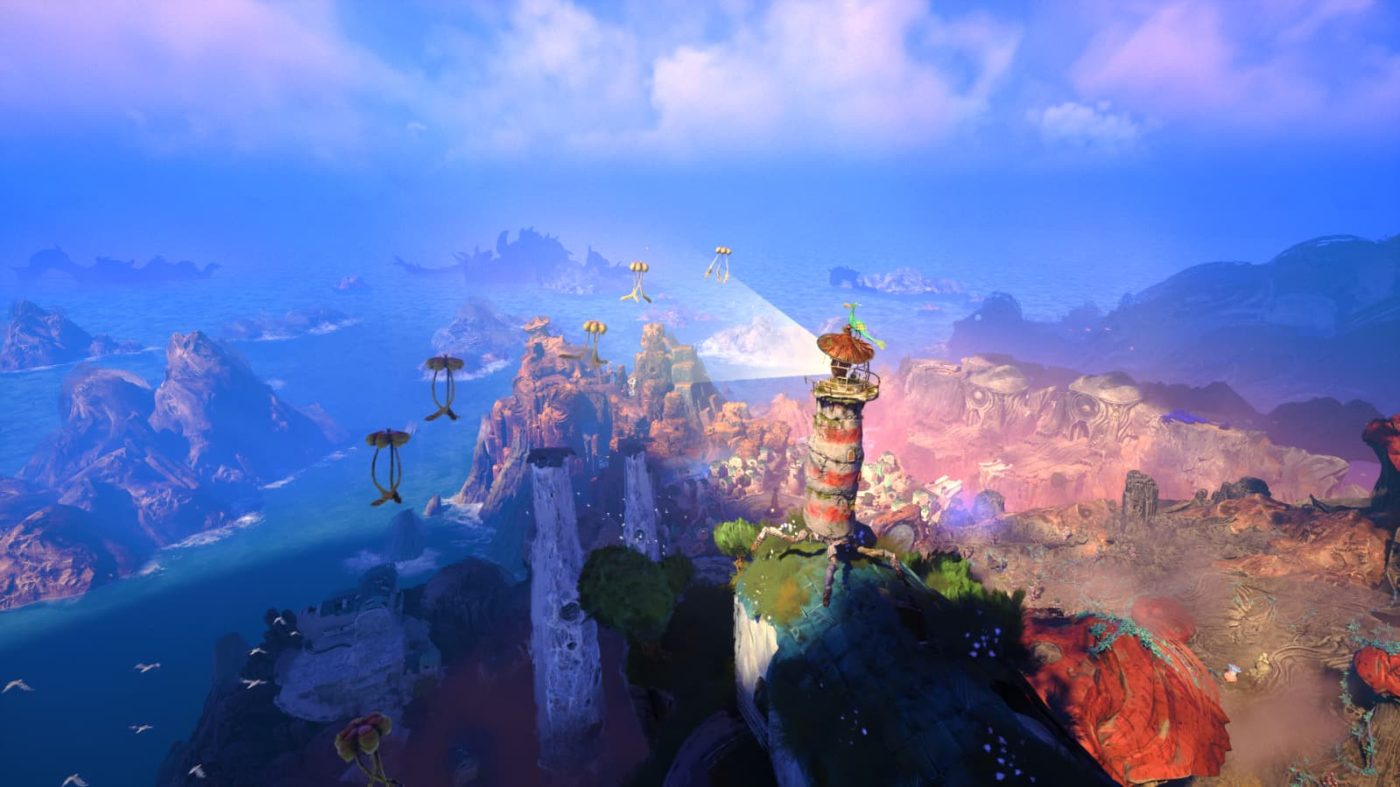
Double Fine and Amnesia Fortnight
To truly understand Keeper, one must look at the human and creative environment from which it emerged: Double Fine Productions, one of the most idiosyncratic and artistically driven studios in modern game development. Founded in 2000 by industry icon Tim Schafer, Double Fine has long cultivated an environment where experimentation is encouraged, individual voices are valued, and distinctive worlds can flourish. Keeper is a direct expression of that philosophy.
Central to this philosophy is Amnesia Fortnight, the studio’s singular internal tradition. Every two years, Double Fine deliberately “forgets” its main project and gives its teams two weeks to conceive and prototype completely new ideas. No commercial mandates, no genre expectations, no stylistic constraints – just an open field for pure creative exploration. It was within this space that Keeper was born. Not as part of a planned product pipeline, but as an intimate experiment by a small group of developers seeking to explore solitude, routine and responsibility through the symbolic lens of an isolated lighthouse.
Double Fine’s hallmark has always been its emotional sensitivity – the way it builds environments that speak, characters that resonate and designs that balance melancholy, humour and precision. In Keeper, that sensibility is unmistakable: in the tender depiction of daily rituals, in the carefully sculpted ambient soundscape, in the tactile texture of the lighthouse and the island, and in the way each mechanic mirrors the protagonist’s internal rhythm. Nothing feels overstated or contrived; the game aims to capture a state of mind, an interior atmosphere. And that is quintessentially Double Fine – a studio unafraid to prioritise artistic truth over commercial predictability.
As publisher and long-time supporter, Microsoft Game Studios has often enabled Double Fine to pursue these smaller, more personal experiments alongside its major releases. Microsoft’s appetite for creative diversity gives Schafer’s teams the freedom to explore prototypes without the pressure of traditional market expectations. Though Keeper was never intended as a commercial product, it still benefits indirectly from this infrastructure – the tools, stability and resources that allow unusual ideas to take shape without compromise.
Like every Amnesia Fortnight project, Keeper was crafted by a compact cross-disciplinary team – designers, artists, audio specialists and animators brought together by a single shared vision. This small scale is an advantage: it creates clarity, cohesion and an emotional texture that could not exist in a larger production. The art team focused on atmosphere – the weathered surfaces of the lighthouse, the interplay of cloud and sea, light as a narrative device. The audio team built a soundscape defined more by its silences than its music, with a restrained score that amplifies feeling without drawing attention to itself. Designers embraced slow, deliberate interactions – small, repeated tasks that reveal character more effectively than any line of dialogue ever could.
Despite its status as a prototype, Keeper distils Double Fine’s ethos with exceptional purity: valuing ideas that might be ignored in a market obsessed with immediacy; probing complex emotional terrain through simple mechanics; and crafting experiences where atmosphere and meaning emerge naturally from place, rhythm and silence.
It is one of the Amnesia Fortnight projects that most resonated with fans because it demonstrates how profoundly a videogame can communicate without spectacular combat, dramatic plot twists or hyper-realistic graphics.
Keeper is a “quiet” game – but one that speaks with remarkable strength.
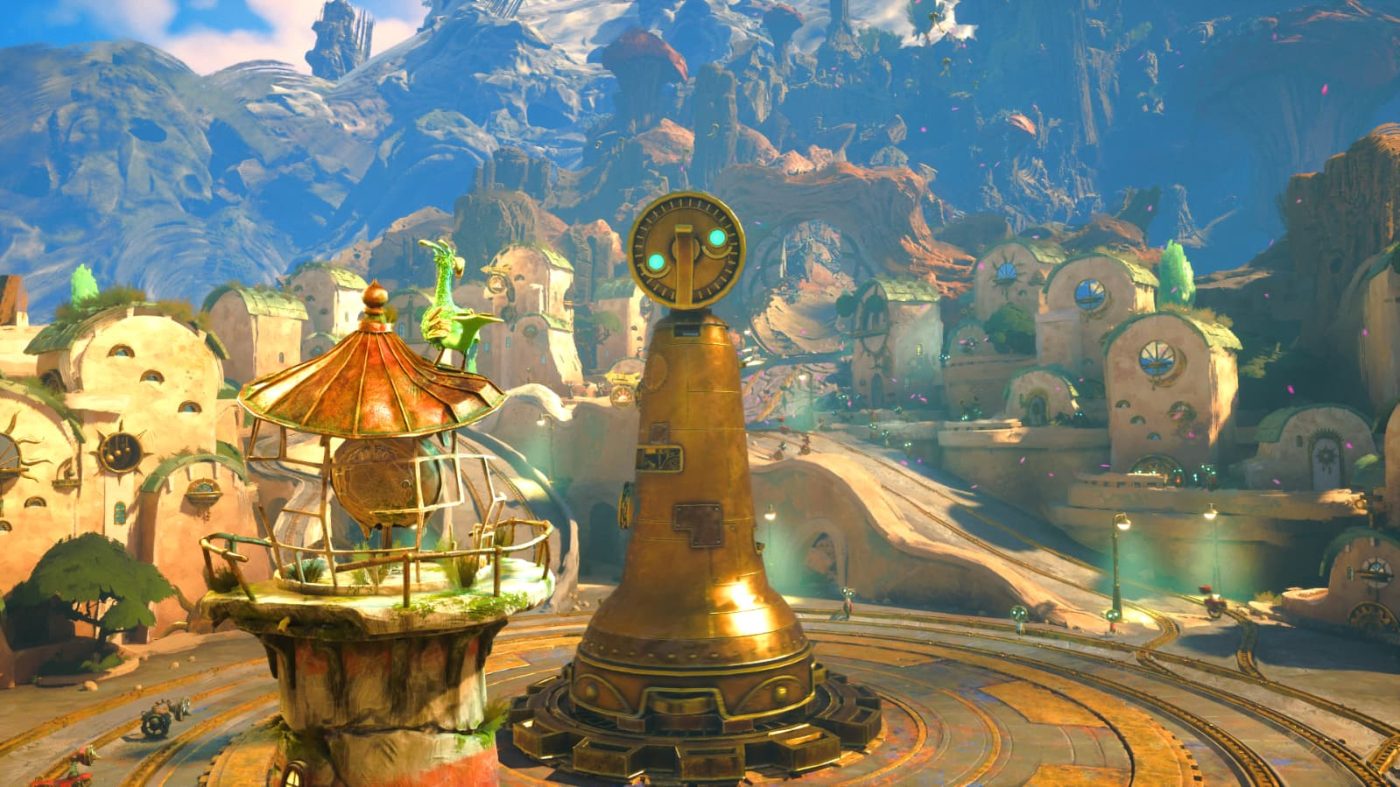
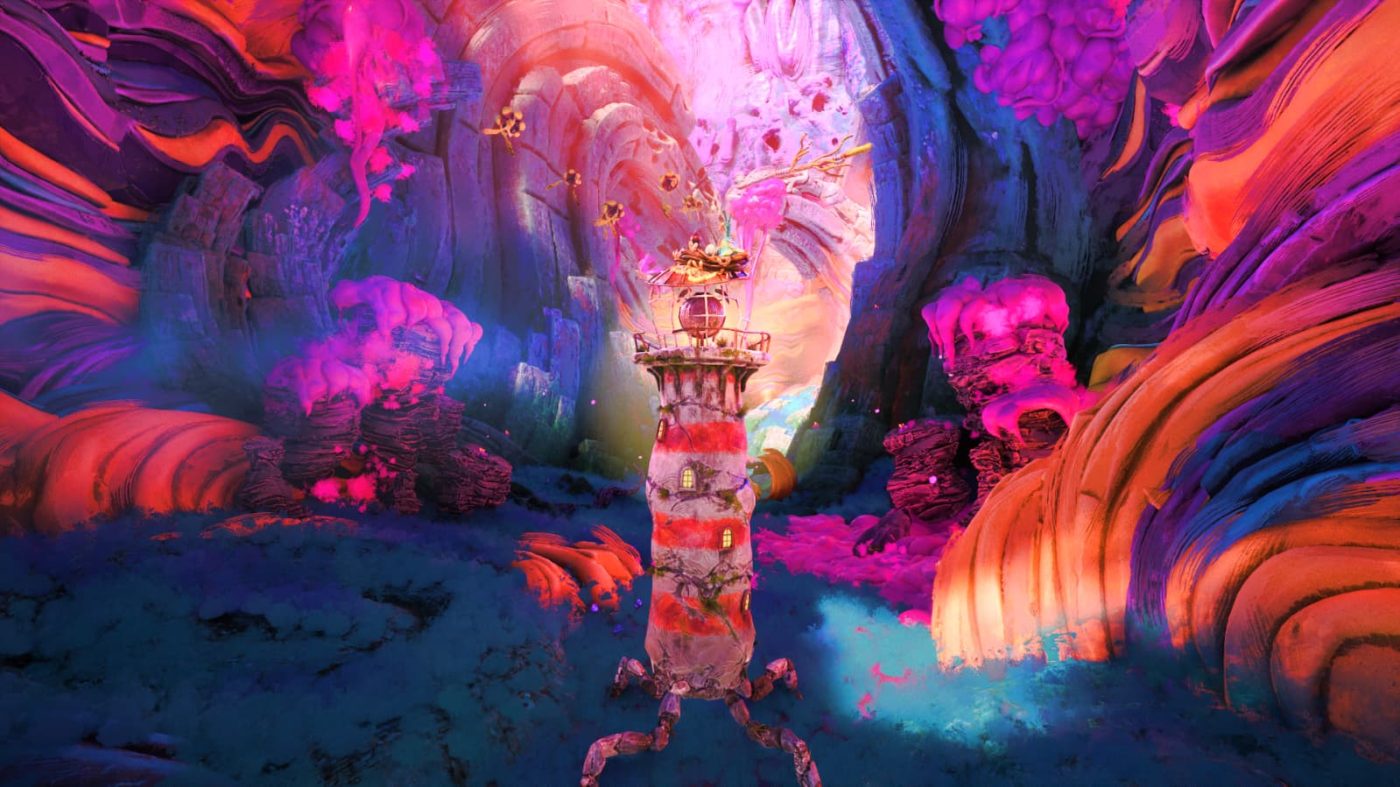
Between Tides and Time
The narrative of Keeper unfolds with a slow, deliberate stillness – like the tides that circle the island where its lone protagonist endures his quiet routine. There is no conventional plot, no dialogue-driven exchanges or cinematic exposition. Instead, the game invites the player to assemble its story through patient observation, thoughtful exploration, and the steady repetition of daily tasks. It is a narrative that surfaces through fragments, gestures, and absences – much like the real journals of lighthouse keepers, who often charted their own inner weather as faithfully as the world beyond their windows.
The protagonist is a lighthouse stationed on a windswept islet, far removed from anything resembling society or human contact. Its duty is simple yet absolute: to keep its light alive. Its presence is essential even when unseen; its significance enormous even when unacknowledged. In that tension – between necessity and invisibility – lies the emotional anchor of the game.
The story truly begins when the lighthouse rises from the earth, sprouting legs, and sets off into the unknown with a quiet seabird companion at its side. What follows is a journey without explicit objectives: a wandering pilgrimage shaped by subtle discoveries, evolving interactions, and an unexpectedly tender companionship. Their bond is understated yet powerful – wordless, but strengthened through mutual reliance.
With the bird’s guidance and its own vital beam, the lighthouse gradually overcomes obstacles, changes, evolves, and climbs toward a distant mountain where a strange aurora has been calling to it since the very beginning.
Central to the narrative is the relationship between lighthouse and bird. What is usually mere backdrop becomes here a living character – creaking in its joints, breathing through its light, shimmering with metallic life. The bird is a constant companion, a reflection of the lighthouse’s unspoken longing, a way to soften the immense solitude that threatens to swallow it whole. As the journey unfolds, players sense the creeping psychological effects of isolation: the world begins to feel subjective, tinged with imagination, and routine shifts from obligation to existential purpose.
Some of Keeper’s most evocative moments are narrative before they are mechanical. The soundtrack pulses like a barometer of emotion – wonder, unease, awe, dread – while the paths oscillate between contemplative wanderings and treacherous ascents that make one question whether forward movement is progress at all, or whether safety lies in returning to the familiar island and its dependable rhythm.
Rather than building toward a neat mystery, Keeper focuses on a slow unveiling of inner life. With no dialogue and minimal overt storytelling, it depends on the player’s sensitivity to symbols, gestures, and environmental cues. Meaning is not delivered – it is discovered, interpreted, inferred.
As days pass – marked by shifting weather, subtle environmental changes, and a routine that grows increasingly weighty – the lighthouse, and by extension the player, begins to feel its purpose change. Maintenance becomes more than a task; it becomes identity. The beam is no longer just a navigational instrument but a metaphor for persistence, for staying visible, for clinging to purpose in the face of creeping loneliness.
The narrative rises like a restrained crescendo. There are no external villains; the antagonists are time, monotony, and the mind’s slow drift into introspection. And it is this quiet, internal focus that makes Keeper so memorable – a story where what remains unspoken often resonates more deeply than anything shown.
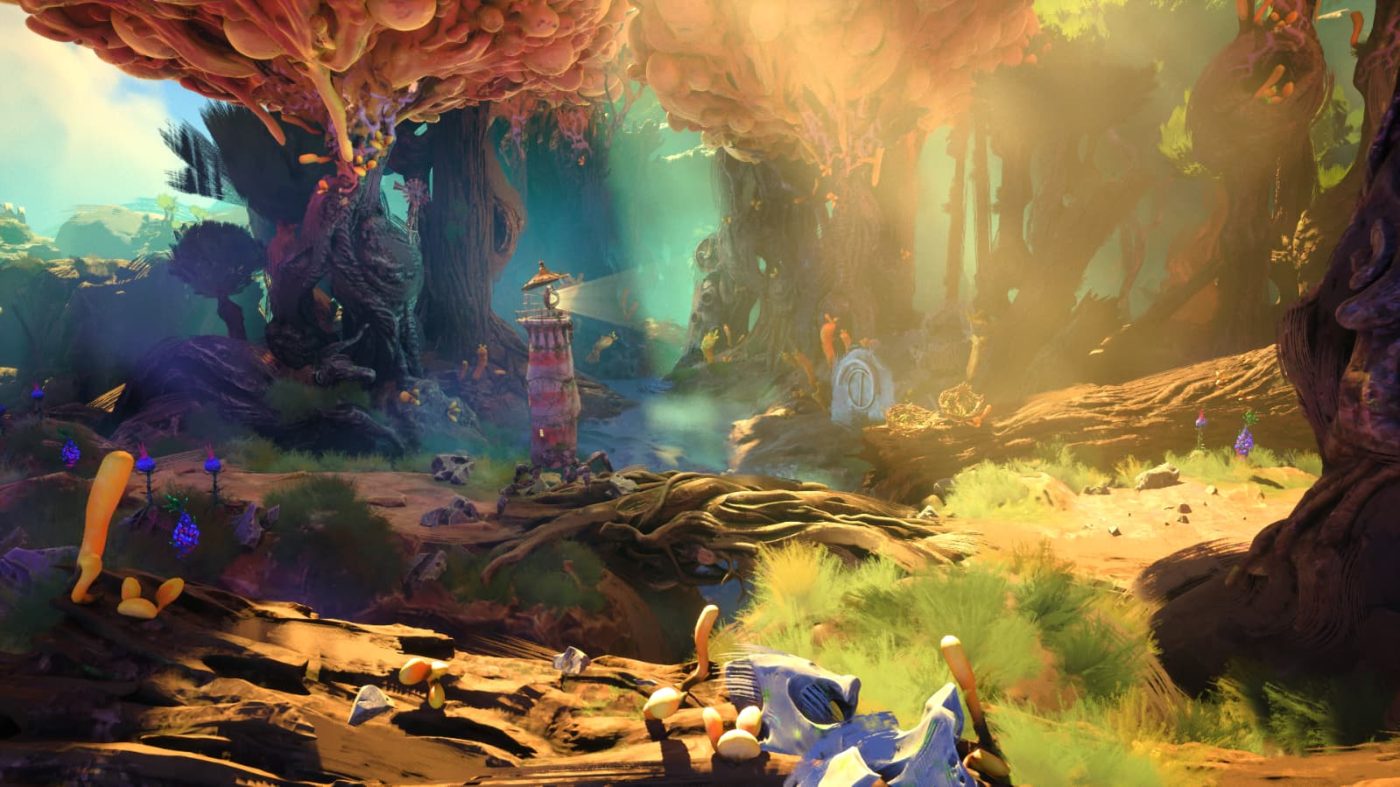
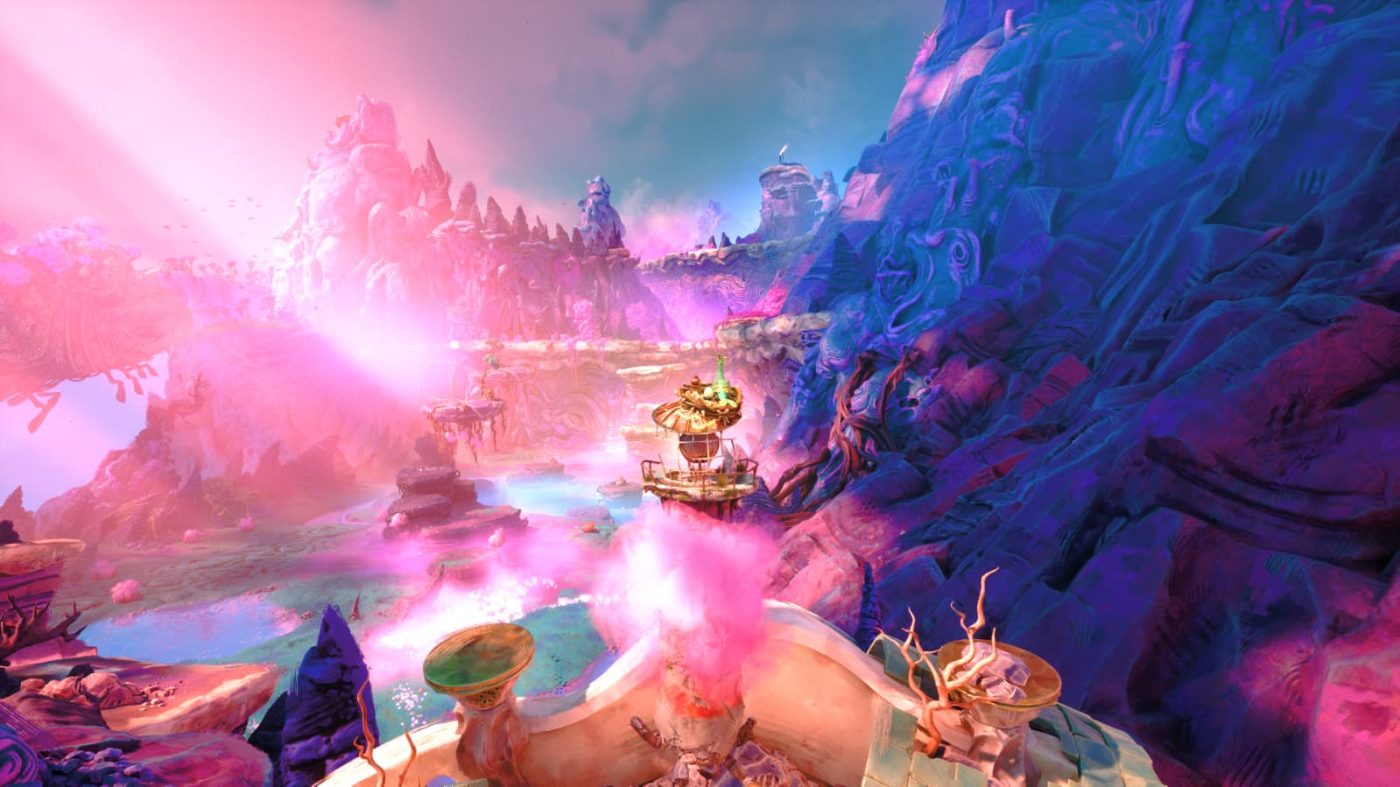

Cycles of Light and Lonelines
Keeper defies the conventions of modern video game storytelling. There are no lengthy cutscenes, no spoken dialogue, no external antagonist to defeat, and no explicitly handed-down storyline. Instead, its story emerges as a slow layering of sensations, observations, and silences. The result is an intensely intimate, almost literary form of storytelling that asks the player to feel rather than merely watch. At its core, Keeper is a meditation on solitude, ritual, and personal responsibility. Its themes – interwoven with subtlety and care – are explored not through exposition, but through the daily life of the lighthouse and its evolving bond with a quiet seabird companion.
Solitude is the backbone of the experience. It is never melodramatic nor reliant on sudden shocks; it is a quiet, persistent isolation, composed of repeated small gestures, empty spaces, and days marked by routine – routines whose significance gradually deepens. Throughout the game, the player encounters no other human presence; the narrative unfolds through absence, and that absence itself becomes weighty. Over time, solitude saturates everything: the external world feels distant, almost unreal. The only constant is the lighthouse – its beam, its gears, its rhythms.
Within this human absence, players are invited to reflect on duty, presence, and the mind’s vulnerability when cut off from social connection. The lighthouse itself emerges as a living symbol: solitary, exposed, essential, and alive in a metaphorical sense. The player’s interactions create a subtle relationship: over time, the lighthouse becomes a silent companion, a mirror of the player’s own interior life. Its light sustains sanity; its failure carries emotional weight as if the player themselves had faltered.
Time in Keeper does not advance linearly; it unfolds in cyclical patterns of activity. This rhythmic repetition does not induce monotony but conveys symbolism. Subtle variations – a storm, a displaced object, an unexpected noise – carry amplified significance, guiding both the protagonist’s and the player’s evolving perception. It is an elegant design choice, one that uses gameplay itself as narrative language: every change is meaningful, every interaction contributes to subtle transformation.
The narrative is deliberately open, inviting players to draw their own interpretations, much like a psychological short story or an introspective film where ambiguity is an asset. Nature plays a central role as an immense, indifferent presence – neither friend nor foe – emphasizing the protagonist’s smallness and vulnerability. Environmental storytelling reinforces the game’s central themes: humility, resilience, and the psychological weight of isolation.
Light stands as Keeper’s most resonant symbol. The lighthouse’s beam embodies duty, presence, connection, hope, and identity—both work and salvation. The game quietly suggests that if the light were to fail, the protagonist would be consumed by the very darkness it strives to hold at bay. Keeper’s narrative is less something to be read than something to be lived: it unfolds through routine, solitude, weather, the sustaining glow of the lighthouse, and the quiet accumulation of silence. Intimate, symbolic, and profoundly human, it positions the player not only as protagonist but as the interpreter of its reflective, meditative truths.
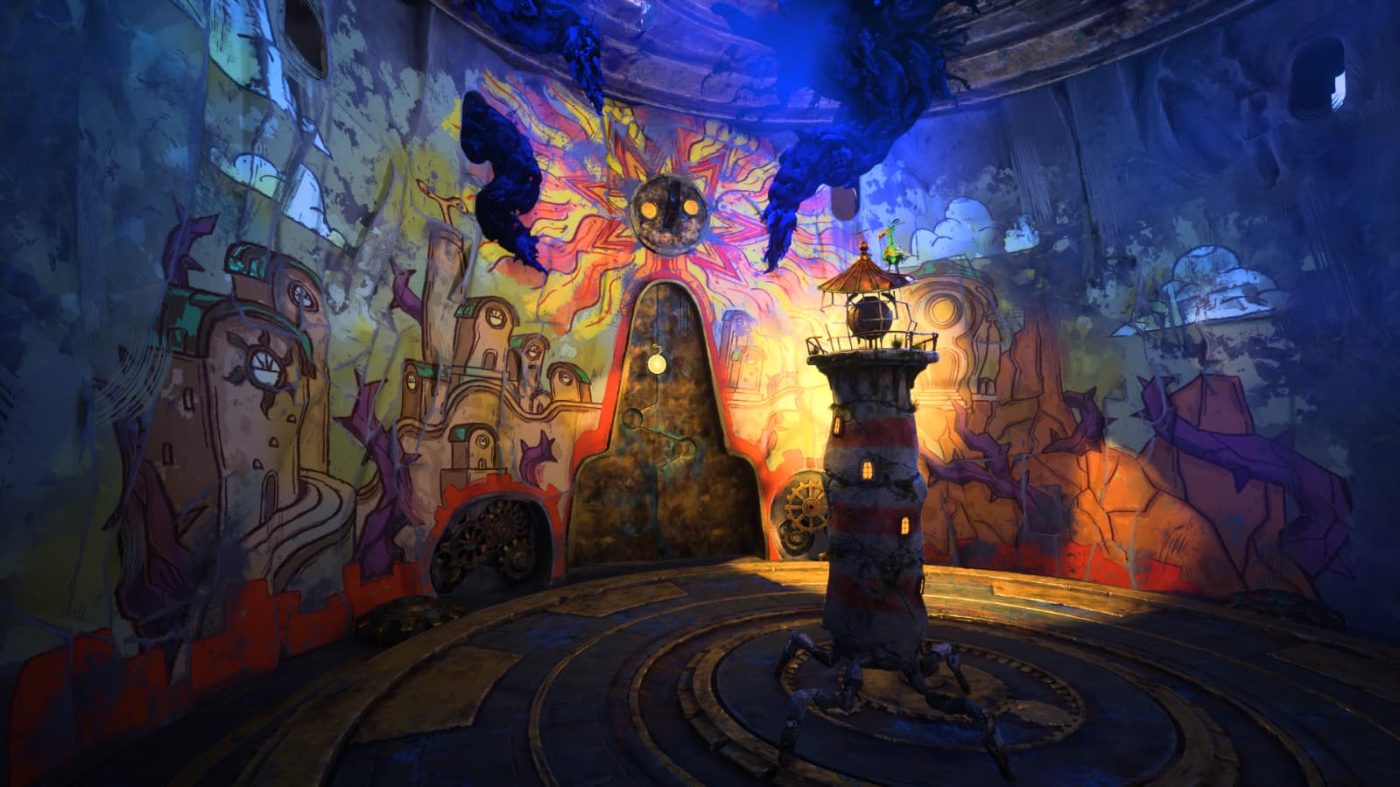
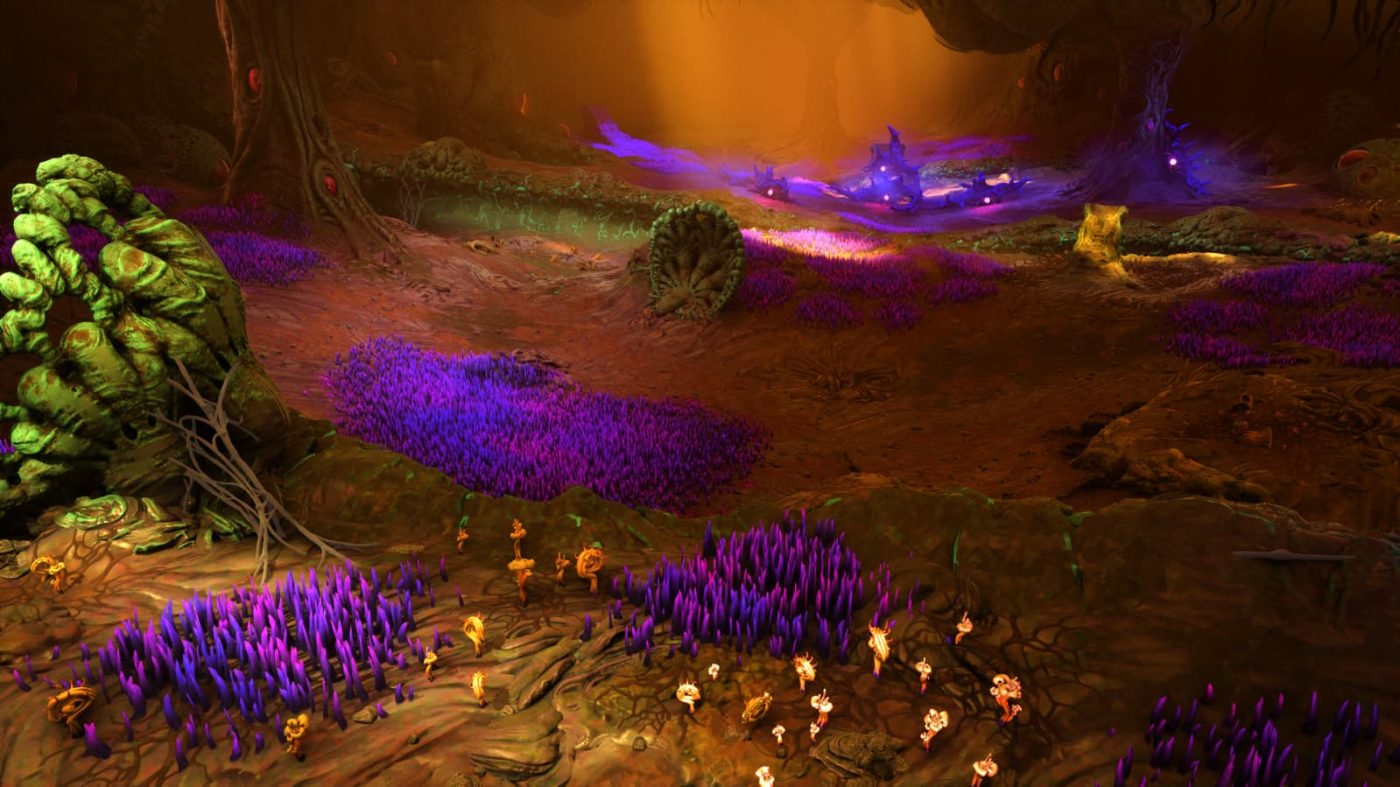
Light, Weather, and Silence: The Heartbeat of Keeper’s World
The technical and artistic design of Keeper forms the very heartbeat of the experience, crafting a world that, while deceptively simple at first glance, is astonishingly rich in nuance, hidden detail, and atmospheric depth. Double Fine, with support from Microsoft, has created a space where nature and solitude are more than backdrop – they are expressive languages. Every element, from the smallest object to sweeping vistas, contributes to the pervasive sense of isolation and melancholic beauty that envelops the protagonist.
The game’s engine is applied with precision and restraint. Instead of chasing photorealism, the focus is on the interplay of light, color, and natural phenomena – often achieving moments of near-cinematic poetry. The lighthouse’s lamp, reflections across wet surfaces, and the light-based puzzles all demonstrate a delicate attention to visual storytelling. Light in Keeper is far more than illumination; it is emotional, narrative, and symbolic, casting warmth against the cold desolation of the island and guiding both player and protagonist.
Weather and environmental conditions serve as integral narrative devices rather than mere decoration. Wind rustles vegetation and howls around the lighthouse; rain reshapes reflections and soundscapes; clouds gather like subtle harbingers of change. These shifts convey a living, indifferent world – one that reacts to the lighthouse’s presence yet remains entirely unconcerned with it. Even the sky contributes, with gradual day-to-night transitions moving from muted greys to soft pinks and violets, making every sunrise and sunset a moment of reflection and quiet narrative resonance.
The lighthouse itself is the visual anchor, a character in its own right. Every surface – from corroded metal to salt-stained wood – tells a story of endurance, neglect, and care. But it is the light that truly dominates: resilient and adaptive, it survives trials and transformations, asserting itself as both gameplay mechanic and symbolic centerpiece.
On a technical level, Keeper achieves an almost painterly spectacle without sacrificing performance. Particle effects, physics, volumetric lighting and dynamic weather cycles are managed efficiently, and draw distance is handled so the horizon always feels wide and unreachable – a visual decision that reinforces the protagonist’s smallness. Animations are deliberately measured rather than showy; their pace supports the game’s meditative rhythm rather than competing with it.
Artistically, the game embraces a coherent visual grammar: cold palettes of greys, muted blues and earth tones predominate, punctuated by the warm focal glow of the lamp. At times the palette shifts to warmer hues – soft reds, dusky pinks, lavender skies – accompanying calmer, more tender moments. Every animation, color choice and prop exists to deepen the emotional tone. The aesthetic aim is never to dazzle for its own sake but to envelop the player: minimalism married to thoughtful detail, where what is withheld often tells more than what is shown.
Ultimately, the technical and artistic package of Keeper is a manifesto: the game speaks through environment, light and weather rather than through exposition. Every pixel, every texture and every subtle motion carries symbolic and emotional weight. It is this seamless fusion of craft and art – the way technical discipline serves expressive intent – that makes Keeper not just beautiful to look at, but profoundly affecting to inhabit.
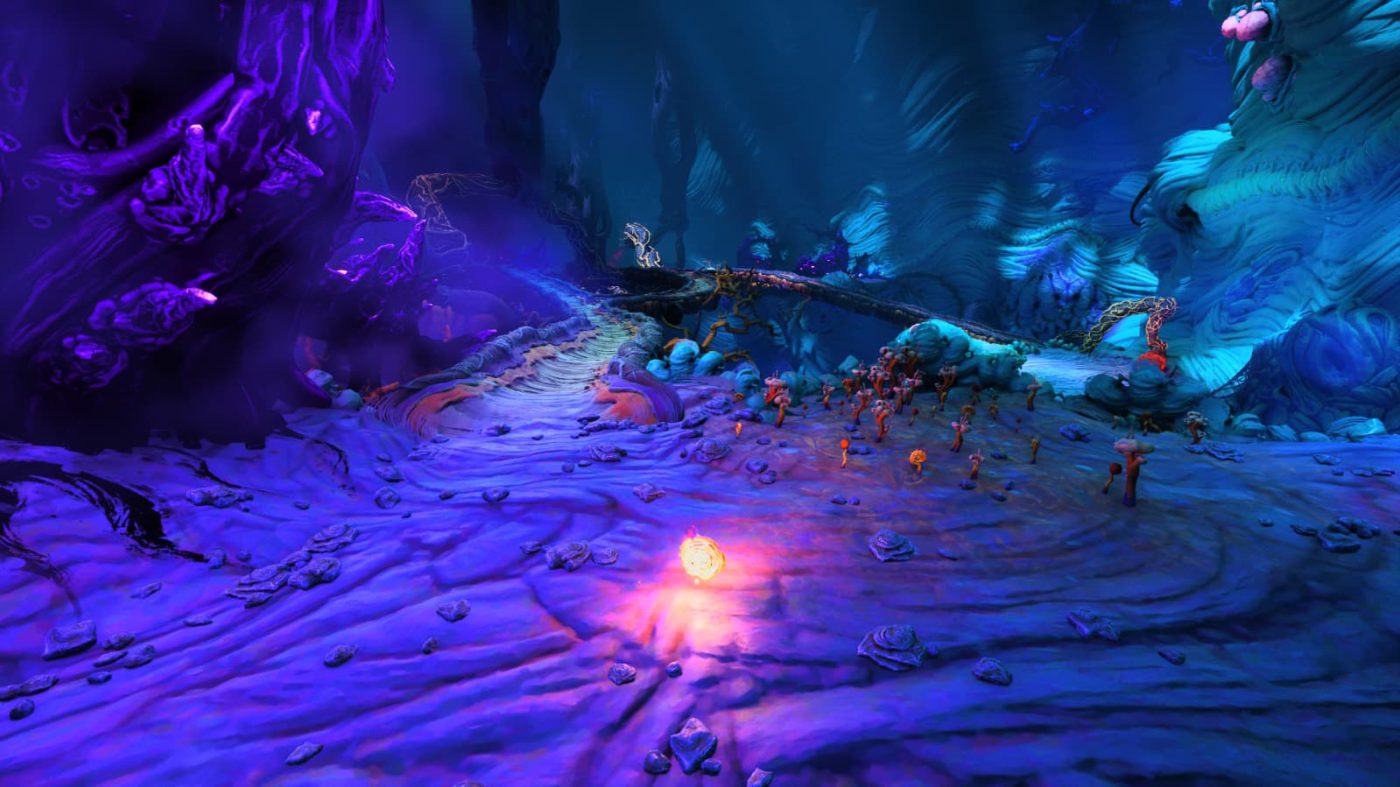
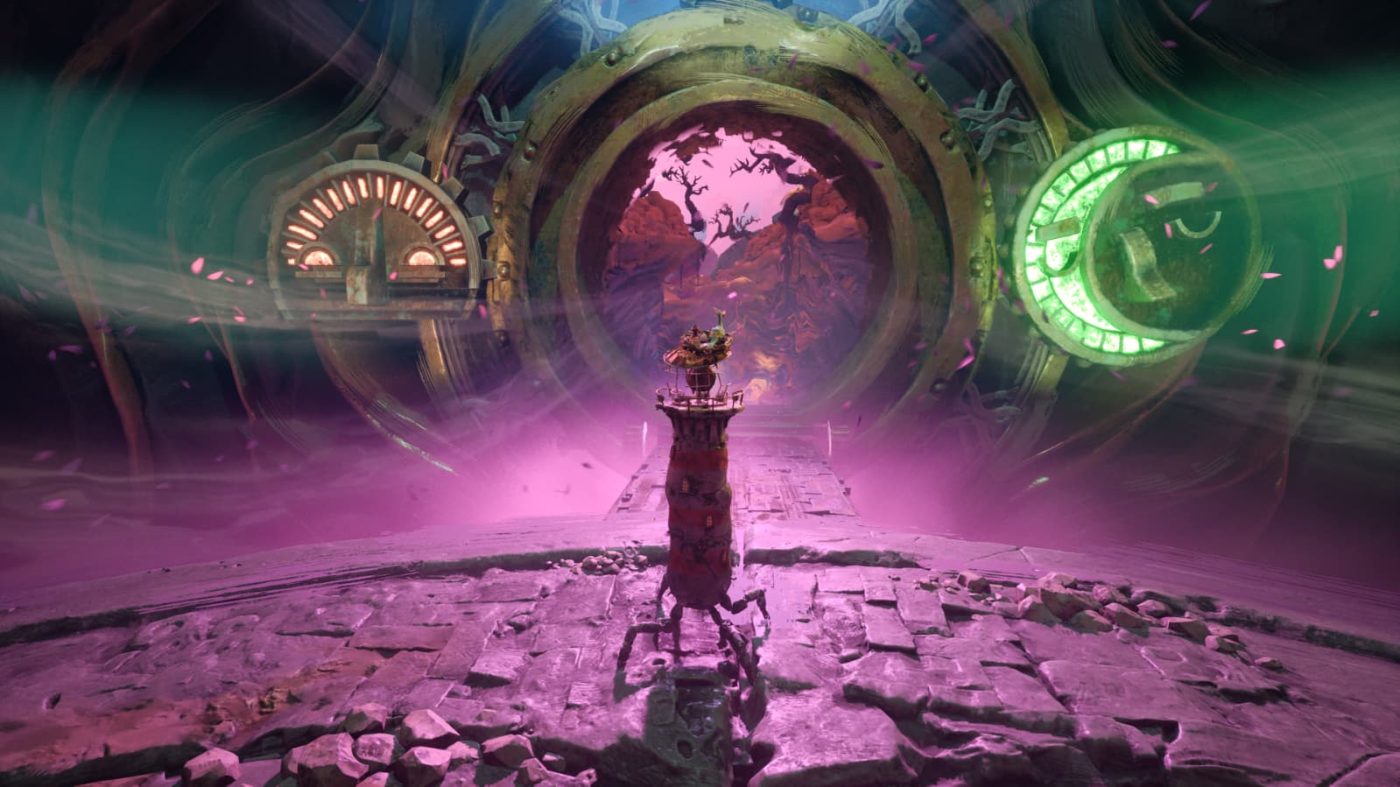

The Emotional Power of Silence
In Keeper, sound is far more than an accompaniment – it is the emotional and narrative spine of the experience. Built on solitude, introspection, and quiet reflection, the game uses audio as a language in its own right: it does not merely underscore action, but communicates the unseen, giving voice to the lighthouse’s inner life and shaping the player’s emotional journey.
Rather than filling silence, the sound design shapes it, giving it texture and presence. True silence rarely occurs; instead, the audio contracts into distant whispers or expands into enveloping, low-frequency hums, creating a constant, subtle tension. The soundtrack is not a simple loop but a living, adaptive organism: layers of environmental noise, mechanical creaks, wind, water, and distant rumblings shift dynamically in real time. Weather and natural elements become narrative actors themselves – rain drenches surfaces and alters echoes, wind whistles through vegetation, and the sea forms a deep, resonant presence that reinforces isolation and scale.
The lighthouse itself has a voice. Through creaks, vibrations and the tonal character of its lamp, the structure communicates without words; these sounds become intimate signifiers, familiar and reassuring the longer you remain. The seabird companion contributes tenderness and warmth – small calls and movements that register as emotional cues rather than mere fauna. Music appears sparingly and precisely, augmenting feeling at key moments without ever overwhelming the natural soundscape; where used, it functions like a human breath in an otherwise elemental environment.
Technically, the audio implementation is exemplary. Three-dimensional spatialisation is finely tuned: positional cues convey direction and distance, so that approaching a cliff or turning toward a storm transforms the sonic environment. Storms can become walls of sound, paths resonate with footsteps and echoes, and ambient layers shift to reflect psychological changes. Here, audio is not mere embellishment; it is structural, deepening immersion and guiding interpretation.
In short, Keeper uses sound as its backbone. Every rustle, drip, and mechanical sigh contributes to a persistent emotional architecture: it is how the lighthouse breathes, how solitude takes shape, and how the game speaks when words will not suffice.
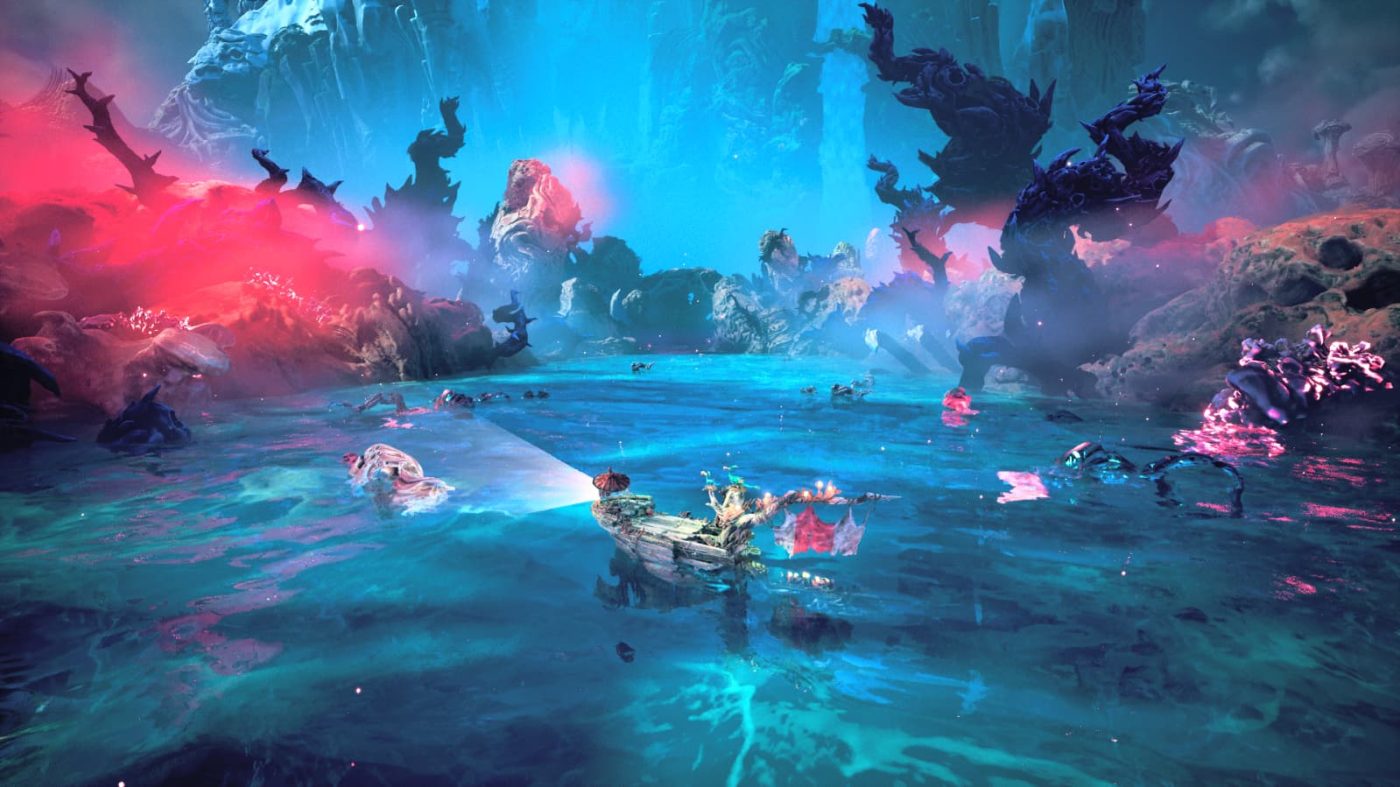

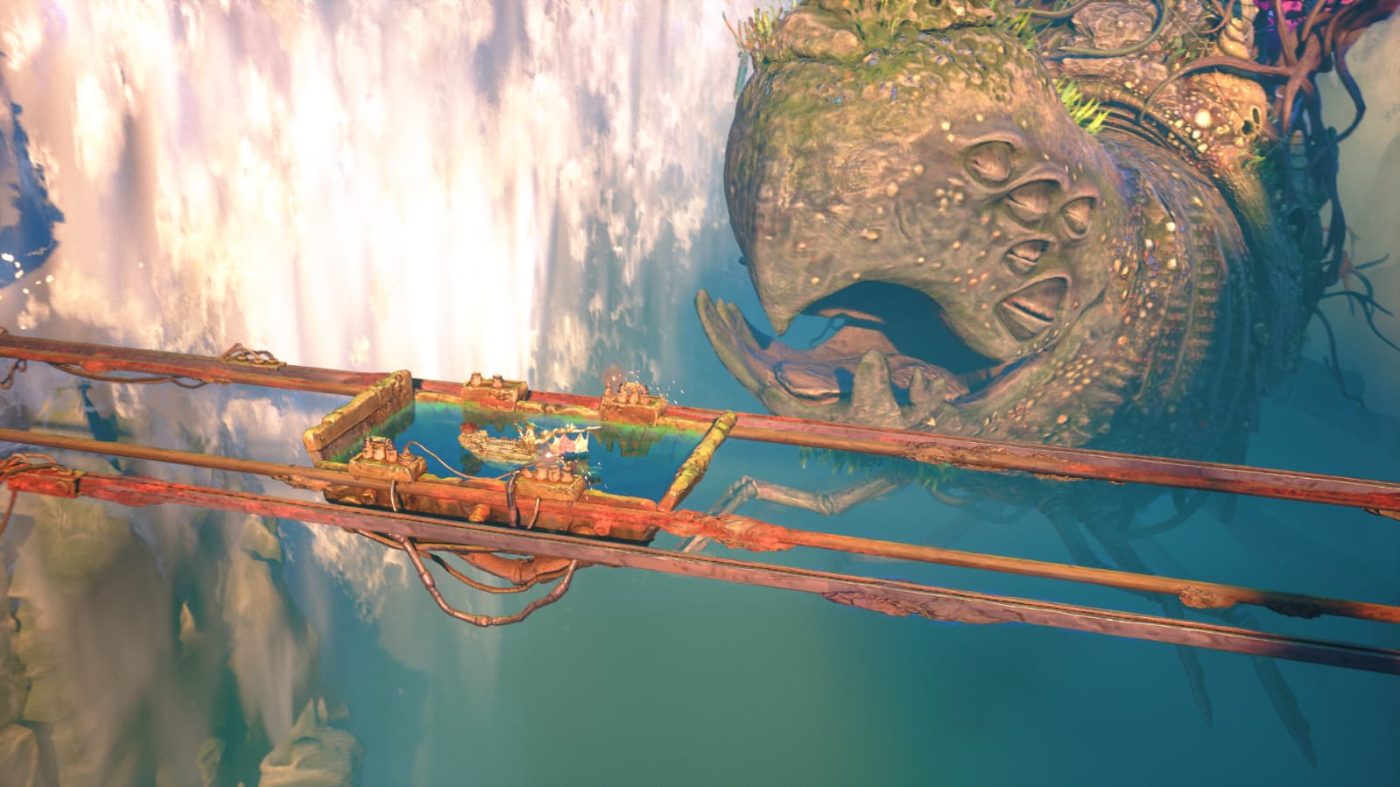
A Microcosm of Solitude
Keeper’s worldbuilding and gameplay are two halves of the same deliberate design philosophy: slow, meditative, and deeply atmospheric. The island you inhabit is compact yet meticulously designed, so that every cliff, path, cave, and outbuilding carries meaning. There are no filler zones or decorative distractions – every element, from wind-battered rocks to salt-stained structures, contributes to the mood and the keeper’s daily life.
The environment feels alive yet suspended, existing outside ordinary time. Tides, shifting light, weather, and the subtle creak of stone underfoot mark time more effectively than any HUD. No other humans appear; instead, fauna and landscape bear narrative weight. This absence emphasizes the lighthouse’s role as a solitary bulwark against oblivion – the island’s only living sentinel in a world that has largely forgotten it.
Gameplay in Keeper is intentionally restrained and practical: tending the lamp, operating simple mechanisms, solving light-based puzzles, and coordinating with the seabird companion. These actions are far from busywork – they form a subtle language of gesture. Each repeated task gains weight over time, and any disruption to routine signals emotional tension or environmental challenge. There are no timers, no combat, and no conventional fail states; the game’s suspense emerges organically – from exposure to harsh elements, from storms that obscure vision and amplify sound, and from the sheer scale of the landscape, which turns every climb into a deliberate exertion.
This tension is subtle but constant. A gale transforms a climb into a struggle; rain reshapes acoustics and reflects light differently; narrow ledges demand patience and presence of mind. The relationship between environment and gameplay is so seamless that one becomes the other: living in the world is the gameplay, and fulfilling the lighthouse’s duties is how the player learns its rhythms and logic.
Exploration follows the same quiet philosophy. There are no conventional rewards – no treasure chests or arbitrary collectibles – only subtle, meaningful anomalies: a displaced object, a weathered scrap, an unexpected echo. These details shape perception, gradually unveiling the island’s history and character. As the journey unfolds, the lighthouse itself evolves, responding to the environment and reflecting the protagonist’s own changing state.
In Keeper, playing is a form of perception. Conventional objectives are absent because the game asks players to move, breathe, and attune themselves to the world’s rhythm. The simple, repetitive acts of maintaining the lighthouse become the narrative itself – and within those acts lies the game’s emotional heart, intimate, reflective, and profoundly human.
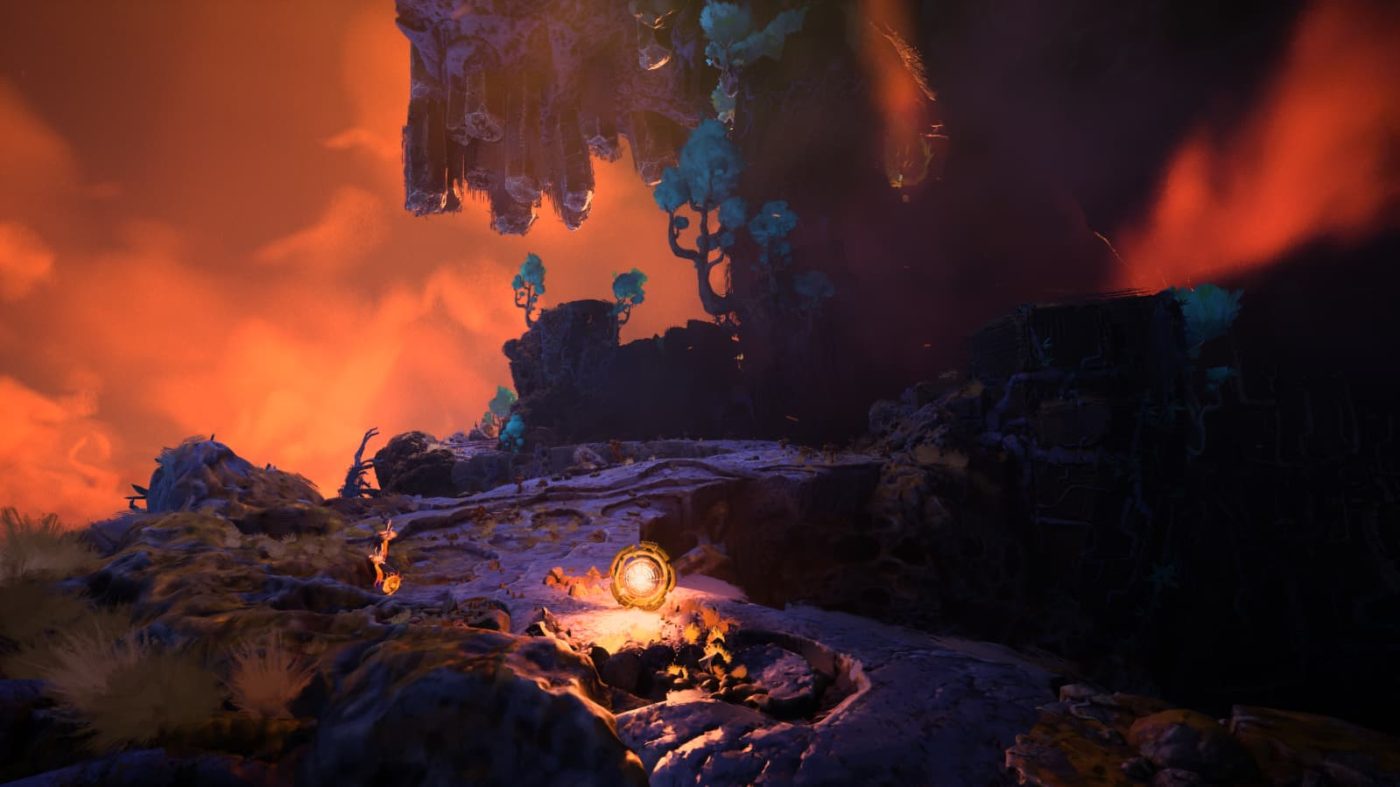
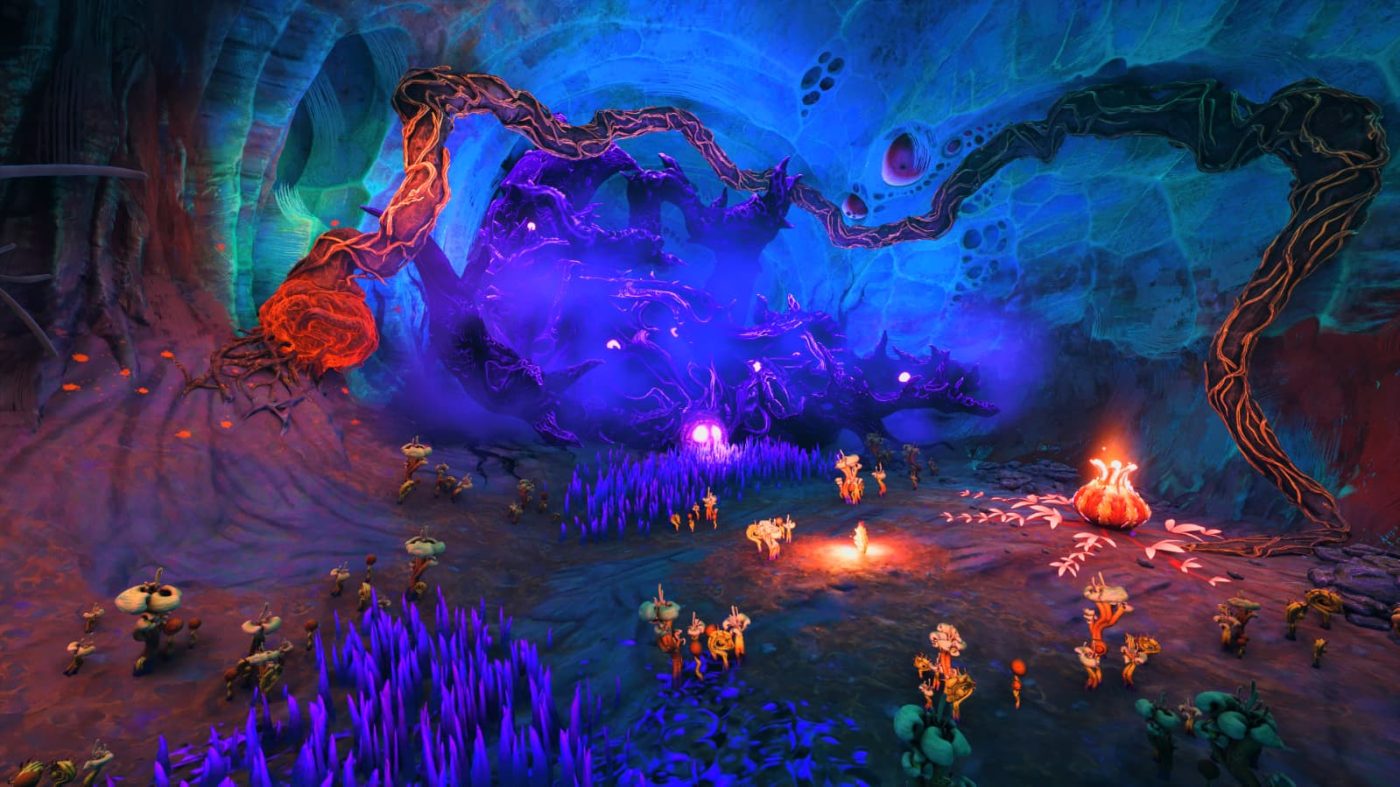
The Quiet Pulse Beneath Keeper’s World
Keeper is a quietly commanding work, one that stands apart in today’s adventure-game landscape thanks to its assured blend of atmosphere, exploration, and narrative subtlety. Double Fine delivers an experience defined by isolation and introspection, inviting players not merely to advance through a story, but to inhabit it – to watch, to interpret, and to feel every moment as it unfolds.
Visually, the game is striking without ever being showy. Dynamic lighting, nuanced shadow work, and finely detailed textures combine to create a world that feels tangible, lived-in, and eerily beautiful. Yet its deliberately unhurried pace may test the patience of players who gravitate toward immediate action or more kinetic gameplay loops.
Where Keeper truly excels is in its sound design. A restrained, minimalist score, the use of subtle ambient drones, and an impeccable sense of spatial audio elevate even the faintest noise into a narrative cue. The resulting atmosphere – tense, contemplative, and immersive – demands constant attention and rewards emotional presence.
Narratively, the game approaches themes of solitude, moral duty, and memory with quiet confidence. Rather than overwhelming the player with exposition, Keeper lets its story emerge gradually, through fragments, impressions, and the environment itself. This slow unfurling encourages curiosity and reflection, though it may limit the game’s accessibility for players seeking a more straightforward or linear narrative arc.
What ultimately sets Keeper apart is its balance of guided storytelling and exploratory freedom. Though its paths are defined, the experience conveys a sense of psychological vastness – an ongoing discovery shaped as much by mood and detail as by plot. Each element, no matter how small, contributes to a world that feels cohesive, mysterious, and profoundly human.

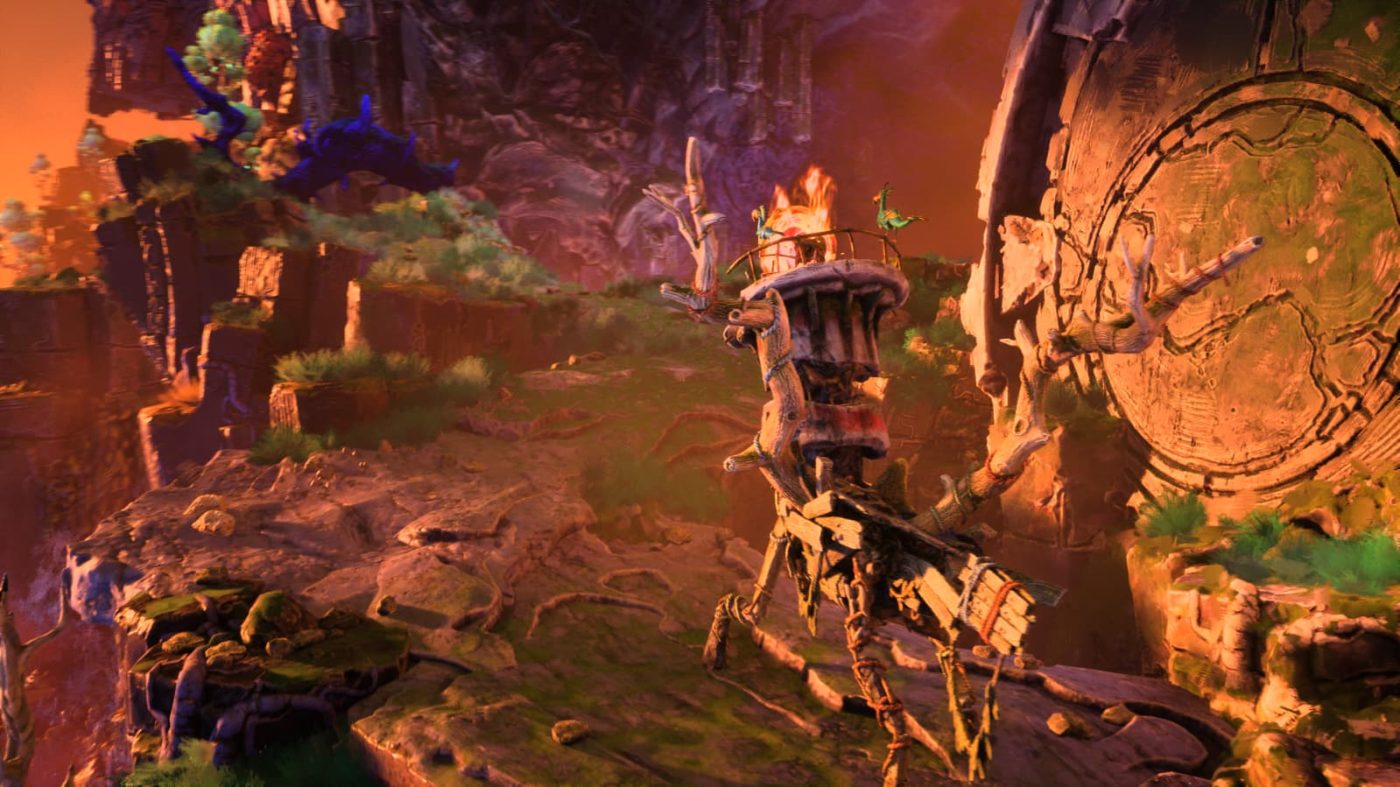
Keeper
PRO
- A deeply felt, emotionally resonant narrative;
- A cohesive, meticulously crafted atmosphere;
- • Outstanding sound design with precise spatial detail;
- • World-building that emerges through observation rather than exposition;
- Gameplay that prioritizes reflection, interpretation and environmental awareness;
- A distinctive concept executed with clarity and artistic confidence.
CON
- • A slow, meditative pace that may deter players seeking immediacy or action-driven gameplay.

